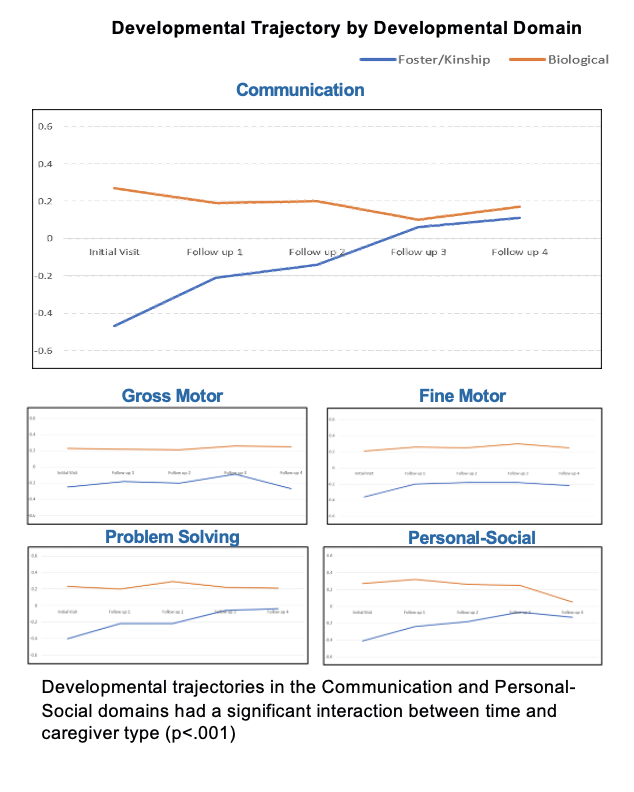Developmental and Behavioral Pediatrics 2: DBP Screening
Session: Developmental and Behavioral Pediatrics 2: DBP Screening
785 - Developmental Characterization of Children in Foster Care
Friday, April 25, 2025
5:30pm - 7:45pm HST
Publication Number: 785.4462
Bianca Sanchez, Children's Hospital Colorado, Aurora, CO, United States; Kristen Slaymaker, Children's Hospital Colorado, Golden, CO, United States

Bianca Sanchez, MD (she/her/hers)
Resident
Children's Hospital Colorado
Aurora, Colorado, United States
Presenting Author(s)
Background: Children in foster care are at greater risk for developmental delay compared to the general pediatric population. Inadequate surveillance, referral, and intervention during formative years may negatively impact long-term outcomes. There is limited information characterizing the developmental trajectories of children in foster care.
Objective: To characterize the developmental profile of children in foster care and compare differences in developmental trajectory to the general pediatric population.
Design/Methods: A retrospective chart review was completed for children ages 9 to 48 months seen in a clinic serving as a medical home for children in foster care from May 2016 to May 2022 in Colorado. The comparison group included children not in foster care, seen in the co-located pediatrics clinic. Groups were matched for age at initial visit, sex, race, and ethnicity. Developmental profile was determined by Ages and Stages Questionnaire (ASQ-3) scores in five domains: Communication, Gross Motor, Fine Motor, Problem Solving and Personal-Social. Trajectory was determined through measuring progress across five developmental domains from at least three different points in time. Chart review data included biological conditions, environmental exposures, and interventions. Differences in developmental profile and trajectory were compared using chi square and mixed effects model analysis, respectively. N= 397; 205 in foster care and 192 in the control group.
Results: There were significant differences in rates of prematurity, mean birth weight and in-utero exposures. Outcome proportions for categorical scores (delayed, borderline, normal) were significantly different between caregiver groups at initial visit for all developmental domains (p <.001). Children in the foster group were more likely to be categorized in the delayed/borderline range compared to the biological group. These differences persisted at follow-up visits. There was a significant interaction between time and caregiver type (p <.001) in the Communication and Personal-Social domains. Scores for the foster care group were initially lower and steadily improved, versus the comparison group which showed higher and stable scores over time.
Conclusion(s): Children in the foster group had lower categorical and continuous ASQ-3 scores compared to the biological group. This difference was most notable in all developmental domains at the initial visit. This suggests that caregiver stability may result in better developmental outcomes. More research is needed to account for co-variables and consider the impact of interventions on developmental trajectory.
Comparison of ASQ Categorical Scores by Developmental Domain
.jpg) Outcome proportions for categorical scores were significantly different between caregiver groups at initial visit for all developmental domains (p < 0.001)
Outcome proportions for categorical scores were significantly different between caregiver groups at initial visit for all developmental domains (p < 0.001) Developmental Trajectory by Developmental Domain
 Developmental trajectories in the Communication and Personal-Social domains had a significant interaction between time and caregiver type (p < 0.001)
Developmental trajectories in the Communication and Personal-Social domains had a significant interaction between time and caregiver type (p < 0.001)
